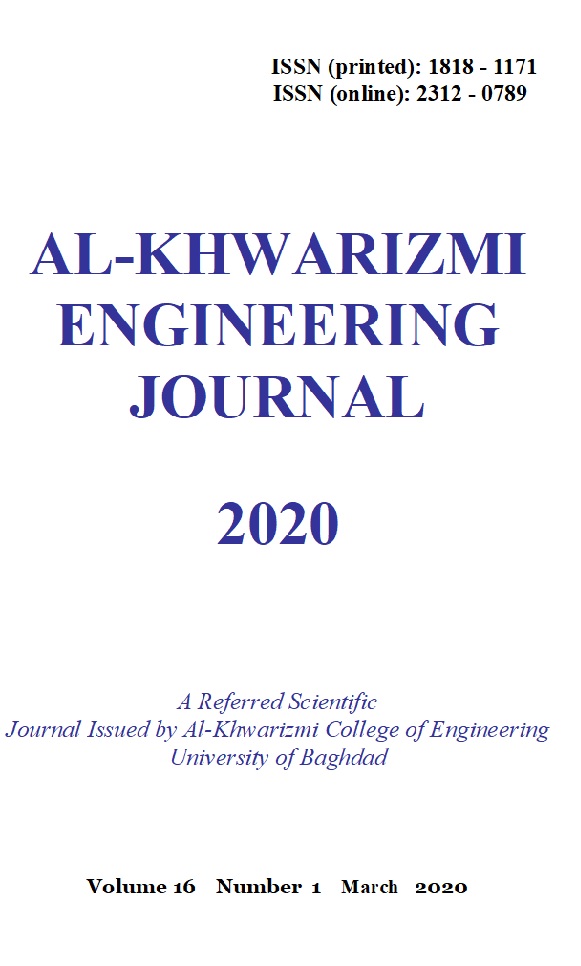Optimization the Effect of Electrode Material Change on EDM Process Performance Using Taguchi Method
DOI:
https://doi.org/10.22153/kej.2020.09.001Abstract
Electrical Discharge Machining (EDM) is a widespread Nontraditional Machining (NTM) processes for manufacturing of a complicated geometry or very hard metals parts that are difficult to machine by traditional machining operations. Electrical discharge machining is a material removal (MR) process characterized by using electrical discharge erosion. This paper discusses the optimal parameters of EDM on high-speed steel (HSS) AISI M2 as a workpiece using copper and brass as an electrode. The input parameters used for experimental work are current (10, 24 and 42 A), pulse on time (100, 150 and 200 µs), and pulse off time (4, 12 and 25 µs) that have effect on the material removal rate (MRR), electrode wear rate (EWR) and wear ratio (WR). A Minitab software environment was used to adopt Taguchi method to analyze the effect of input on output parameters of EDM. The results of the present work showed that the best of MRR in copper and brass electrodes with (current 42 A, pulse on time 100 µs and pulse off time 25 µs) are (84.355×10-3 g/min) and (43.243×10-3 g/min) respectively, and the MRR predicted by Taguchi are (86.1751×10-3 g/min) in copper electrode by using the parameters with (current 10 A, pulse on time 200 µs and pulse off time 25 µs) and (43.2979×10-3 g/min) in brass electrode at current 42 A, pulse on time 100 µs, and pulse off time 25 µs. The lowest EWR occurs with a value of (1.4510×10-3 g/min) with (current 10 A, pulse on time 100 µs, pulse off time 4 µs) variables when using a copper electrode. The highest WR (2.602508) was found for the brass electrode with (current 24 A, pulse on time 200 µs, pulse off time 4 µs) variables.
(Received 20 January 2019; accepted 4 September 2019)
Downloads
Downloads
Published
Issue
Section
License
Copyright: Open Access authors retain the copyrights of their papers, and all open access articles are distributed under the terms of the Creative Commons Attribution License, which permits unrestricted use, distribution, and reproduction in any medium, provided that the original work is properly cited. The use of general descriptive names, trade names, trademarks, and so forth in this publication, even if not specifically identified, does not imply that these names are not protected by the relevant laws and regulations. While the advice and information in this journal are believed to be true and accurate on the date of its going to press, neither the authors, the editors, nor the publisher can accept any legal responsibility for any errors or omissions that may be made. The publisher makes no warranty, express or implied, with respect to the material contained herein.
















